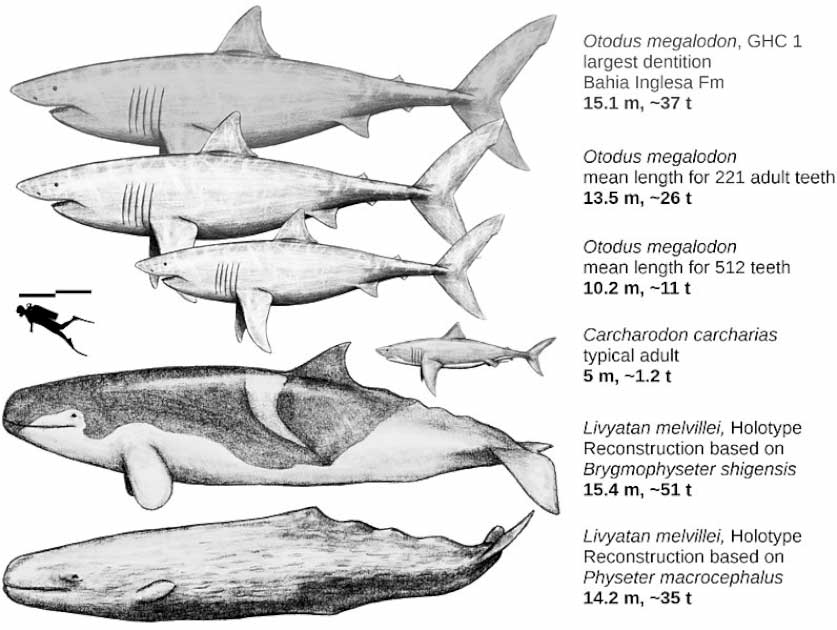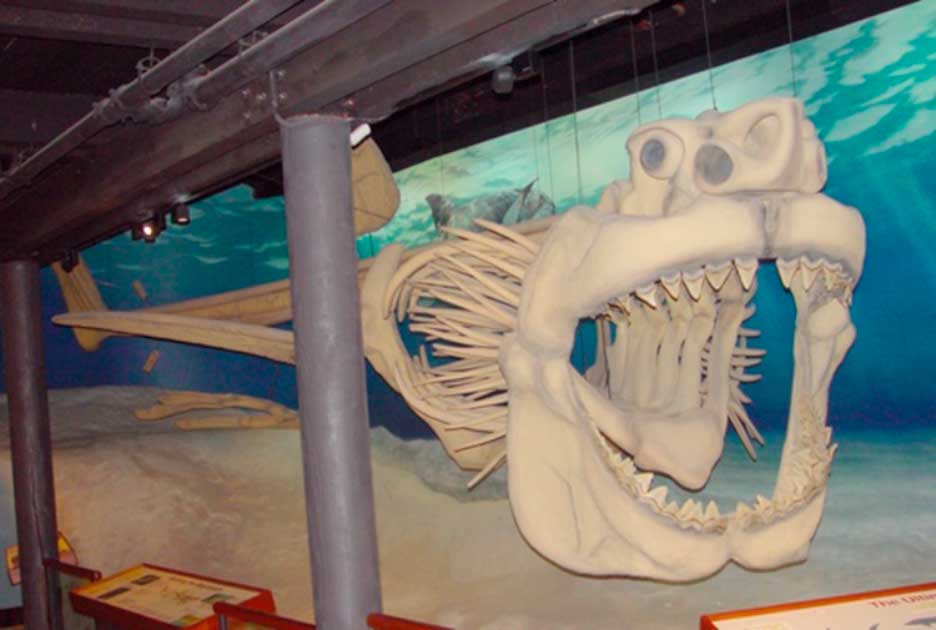The seas have been home to many gigantic creatures and still hold many dark secrets buried in their depths. Some may say that the history of the whole world and everything we see around us today evolved from the seas. However, recently it has been the creatures that roamed the seas millions of years ago that have been grabbing the interest of researchers.
For there were true monsters in the ancient seas we evolved from. One such massive creature was, or maybe is, the Megalodon, perhaps the largest and most powerful predator to have ever lived. Accounts have suggested that the Megalodon had more bite force than a Tyrannosaurus Rex.
Remnants of the Megalodon shark have been found in oceans all over the world. But what did this awesome predator actually look like? And could it, just possibly, still be lurking in the ocean’s depths?
The Monstrous Megalodon
The Megalodon is believed to have been the biggest shark to have ever existed. As a matter of fact, it was also one of the largest fish ever. The oldest fossils of Megalodon go back almost 20 million years, and the creature had dominated the seas for an extremely long time.
Researchers believe that it had become extinct around 3.6 million years ago only. Apparently, this would mean the Megalodon ruled over the oceans for at least 13 million years.

The size of the Megalodon has been one of the “biggest” mysteries about the apex predator. No one exactly knows the dimensions of the Megalodon, although some estimate that they grew to sizes of almost 15 to 18 meters (49 to 59 feet) in length.
- Mokele-Mbembe: A Dinosaur Hidden in the Jungles of Africa?
- Rock Apes of Vietnam: Jungle Cryptid of the Vietnam War?
When compared to the great white shark, one of the largest apex predators known in today’s oceans the Megalodon is almost three times longer. However, such estimates have been made solely on the basis of the teeth of the Megalodon sharks, which measured around 18 centimeters, far larger than currently know shark teeth. The name Megalodon actually translates to “large tooth”.
The size of the Megalodon teeth and their serrated texture leaves no doubt: it must have been a predator. Evidence of fossilized Megalodon teeth embedded in prehistoric whale bones suggests that the giant shark must have preyed on large marine animals such as whales, dolphins, and other sharks.
Another important discovery about the Megalodon suggests that it had an unusually wide jaw spanning around 2.5 to 3.5 meters (8 to 11 feet) for swallowing large prey. If it still exists somewhere in our oceans, it has the largest and perhaps the most powerful bite of any creature we know.
A Lack of Information
However, that is almost all the information the fossil record can provide us, and there is very little to go on for understanding this giant predator. Even information as to the size of the Megalodon are assumptions based solely on the size of its teeth, and is very much up for debate. A recent research study at the DePaul University in Chicago implied the lack of any scientific evidence for supporting or negating the accuracy of existing perceptions of the Megalodon shark’s size.
The research study draws a new perspective on paleontology and points out certain highlights about where it could have lived. As a matter of fact, the correlation between the habitat of the Megalodon and their body shape and size even suggests that our body size estimates may be inaccurate.
For example, the great white shark is the foundation for imagining how the Megalodon may have looked. However, the body form and behaviors of great white sharks results in them being partially warm-blooded. By contrast the Megalodon would only have been able to maintain blood temperature in warm tropical waters, where they must have hunted for their prey.
Even if the resemblances between the great white shark and Megalodon cannot be denied completely, these are mere speculations. Researchers have pointed out that any meaningful advances in finding more details about the Megalodon shark would depend on discovery of a complete skeleton of the species.
However, that seems very unlikely considering the fact that shark skeletons are made of soft cartilage. Unlike human bones, which are covered with calcium phosphate, shark skeletons wear away completely over the course of time. If we find an ancient Megalodon it will be a huge stroke of luck.
Could it Still be Out There?
While the seas are vast and contain many secrets, it seems unlikely that the Megalodon is still out there somewhere. The truth is most likely that the Megalodon sharks went extinct towards the end of the Pliocene era. The estimated time of extinction must have been around 3.6 million years ago.

How did the massive sharks die? The end of the Pliocene era marked the onset of a radical drop in temperatures all over the world. Megalodon sharks survived in tropical waters, and their size must have made it difficult for them to adapt to the changing conditions.
For example, a large proportion of marine animals went extinct due to cooling temperatures, and the Megalodon must have run out of prey. On the other hand, smaller prey may have adapted to cooler waters where sharks could not follow.
In addition, the Megalodon has been thought to have created their nursing colonies near the shore, and the freezing temperatures must have destroyed them. It seems almost certain that the increasingly hostile conditions drove the giant shark to extinction.
Never say never, though.
Top Image: Could the Megalodon still be somewhere in the oceans of the world? Source: Paul / Adobe Stock.
By Bipin Dimri